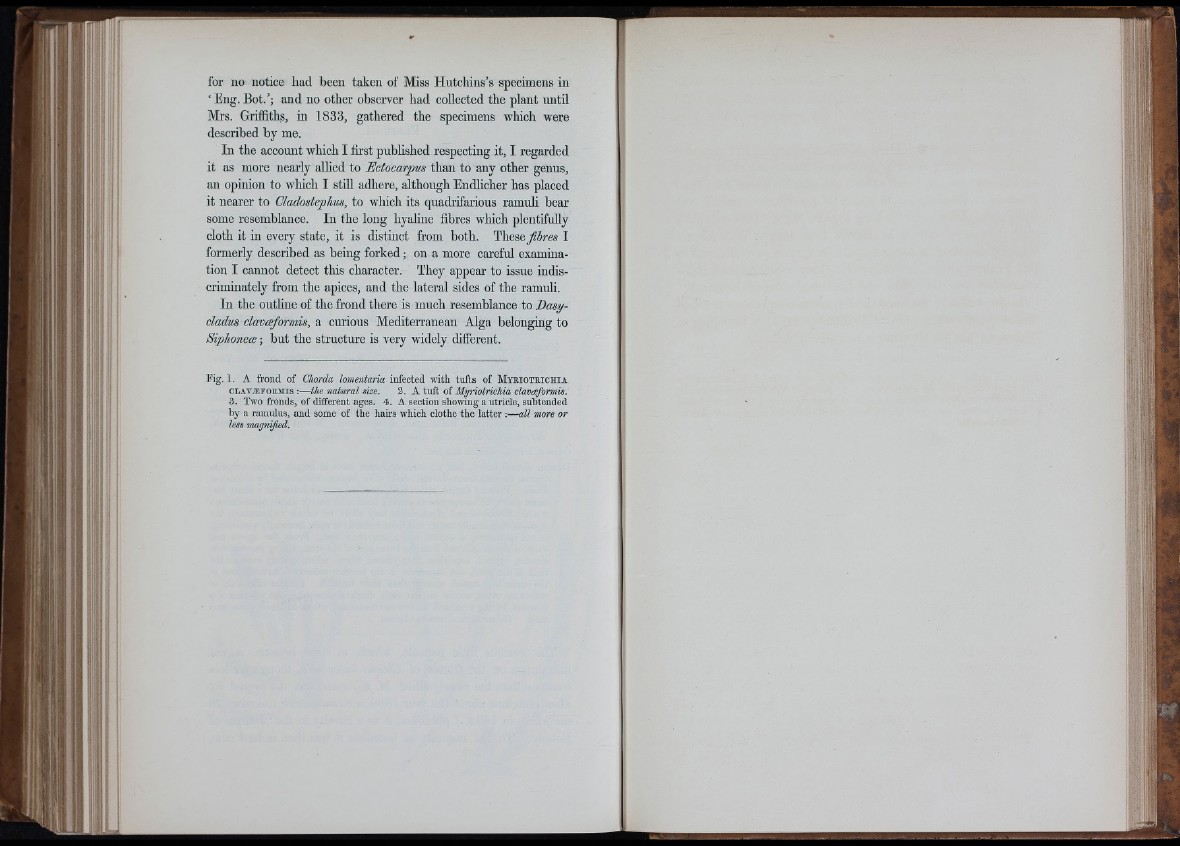
for no notice had been taken of Miss Hntchins’s specimens in
‘ Eng. Bot.’; and no other observer had collected the plant until
Mrs. Griffiths, in 1833, gathered the specimens which were
described by me.
In the account which I first published respecting it, I regarded
it as more nearly allied to Fctocarpus than to any other genus,
an opinion to which I still adhere, although Endlicher has placed
it nearer to Cladostephus, to which its quadrifarious ramuli bear
some resemblance. In tbe long hyaline fibres which plentifully
cloth it in every state, it is distinct from both. These I
formerly described as being forked; on a more careful examination
I cannot detect this character. They appear to issue indiscriminately
from the apices, and the lateral sides of the ramuli.
In the outhne of the frond there is much resemblance to Dasy-
cladus clavaformis, a curious Mediterranean Alga belonging to
SiphonecB; but the structure is very widely different.
Fig. 1 . A frond of Chorda lomentaria infected with tufts of M x b io t r ic h ia
CLAVAiroKMis :— the natural size. 3. A tuft of Myriotrichia clavffi’ormis.
3. Two fronds, of different ages. 4. A section showing a utricle, subtended
by a ramulus, and some of the bans which clothe the la tte r :— all more or
t
to'-
'■4-
■illf
-TÍÜI'- "."I